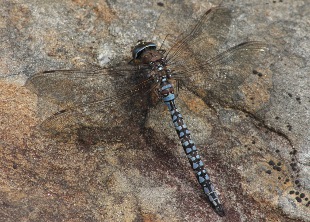
Azure Hawker dragonfly
The new discoveries on the 10,000-acre estate include the first Scottish record of one species of sawfly and what may be the first British record of another; the second-ever British record of a waxfly species; and species of spider, cranefly and dragonfly all listed in the UK’s Red Data Book of endangered species.
At least 60 priority species for conservation have now been identified on the site, which lies to the west of Loch Ness and which has been described as a “lost world”. The 2011 findings add to the extensive range of species already discovered on Dundreggan, some of which were previously unknown in Scotland, or which were feared to be extinct there.
Alan Watson Featherstone, Executive Director of Trees for Life, said: “The richness and diversity of life on Dundreggan is astonishing. The secrets slowly being revealed on this Highland estate suggest that we have much more to learn about the true extent of Scotland’s biodiversity. It’s a powerful reminder of the crucial importance of conservation work.”
A survey last year by Guy Knight, Curator of Entomology at National Museums Liverpool, added 32 species of sawfly to those that he found on Dundreggan in 2010. This brings the total known sawfly species there to at least 120, which Guy has described as being “quite exceptional” and “very difficult to find a parallel in the Highlands”.
A dragonfly survey conducted by dragonfly specialist Jonathan Willett mapped the Red Data Book species Azure Hawker (Aeshna caerulea), classified as Vulnerable and under-recorded in Scotland. The study suggests that Dundreggan has the largest known single area of contiguous breeding habitat for the Azure Hawker in Scotland – although other areas of potentially suitable habitat have yet to be thoroughly surveyed. The survey also identified the near-threatened Northern Emerald Dragonfly (Somatochlora arctica).
Trees for Life purchased Dundreggan in 2008. The charity is planting half a million trees on the estate as part of its award-winning restoration of the Caledonian Forest. The charity is also working for the return of rare woodland wildlife, plants and insects, and is conducting scientific research and education programmes. Volunteers are carrying out much of the forest restoration work at the site. For more information, see the Trees for Life website.
